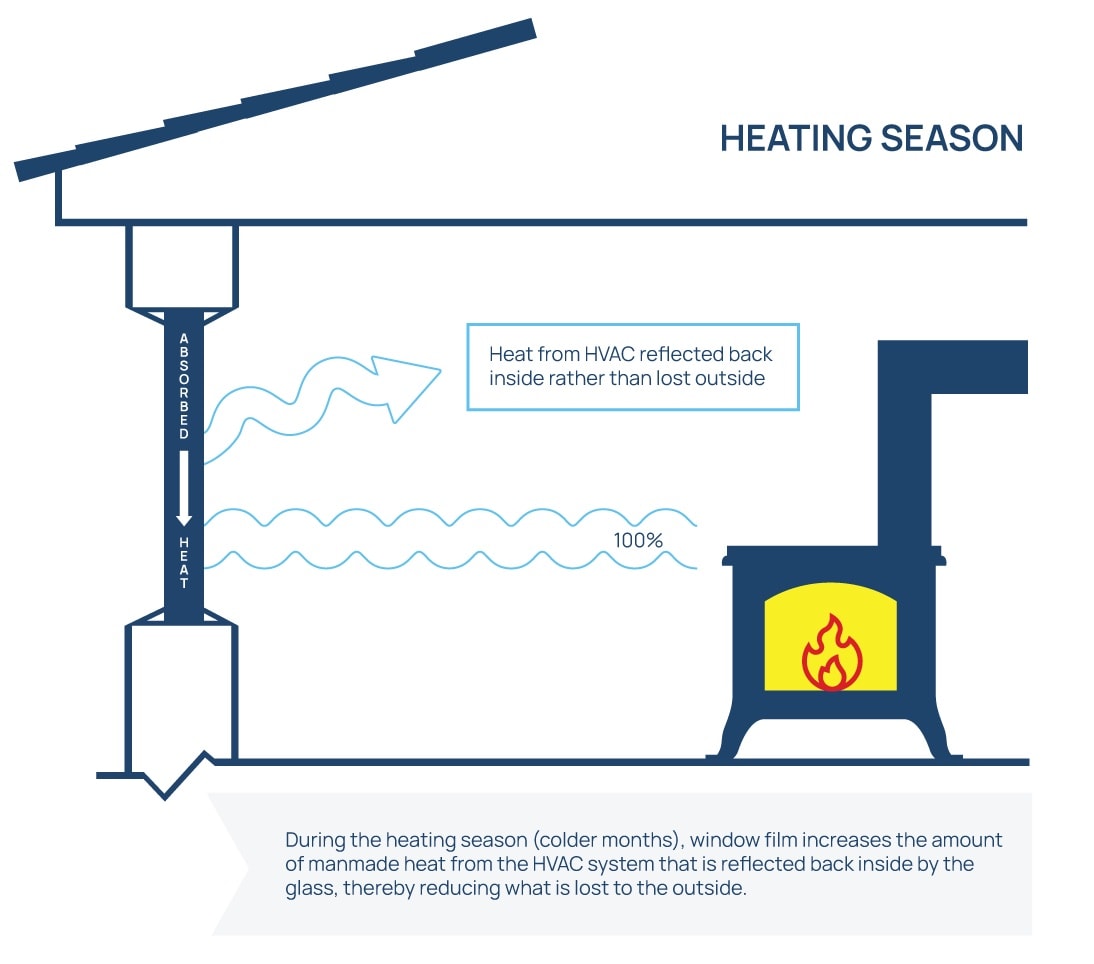Blog
How Window Film Impacts a Building’s Heating & Cooling Load


The energy efficiency of buildings is becoming increasingly important. According to the U.S. Department of Energy’s most recently published study on commercial energy usage in 2015, the buildings sector makes up about 76% of electricity use, and 40% of all United States primary energy use associated with greenhouse gas emissions. Architects, contractors, business owners, and more are beginning to focus their attention on ways in which they can reduce energy consumption well before ground is broken on a new construction project and into the future. It’s incredibly beneficial to address energy inefficiencies prior to the space being built to avoid lasting problems down the line, saving a great deal of time and money. These days, it’s not enough to simply meet building codes; many are discovering the importance of exceeding minimum requirements to improve energy efficiency, save money, and help the environment.
What Impacts a Building’s Energy Efficiency?
Many factors affect how efficiently a building operates, including lighting, electronics, heating, cooling, and more. The category accounting for the largest portion of energy usage is heating, cooling, and ventilation systems, making up approximately 39% of a building’s total energy consumption. An inefficient heating or cooling system can result in not only high costs, but also an energy-inefficient building.
High Heating & Cooling Loads Pose a Problem
Heating and cooling loads are an important factor that must be taken into consideration when designing the beginning stages of a building. After all, they have a direct impact on a building’s energy efficiency and ultimately, the energy bills. A building’s design, orientation, and location can all have a significant impact on the heating and cooling loads of a space. For instance, a west-facing building may experience warmer temperatures from the afternoon sun through windows. Although you don’t necessarily have control over the location of the building, there are some controllable factors that can impact the building’s loads.
For instance, efficient HVAC equipment can keep up with fluctuations in temperature, keeping the indoors comfortable no matter the weather outside. However, efficient heating and cooling systems mean nothing without proper insulation. Without proper insulation, even a brand new and fully-functioning heating system cannot counteract heat loss from a space in the winter. Not to mention, in the warmer months, the sun’s heat through the window can cause cooling systems to work overtime to maintain cool indoor temperatures.
While it’s important for architects to keep all of the factors that impact a building’s energy efficiency in mind when writing specifications and designing a space, there are some factors that are simply beyond your control, such as a building’s position and location. With that being said, how can you ensure that it will operate at maximum efficiency after a building is built? The answer is simple: window film.


Improve Insulation, Create Comfortable Temperatures, & Save Money
Windows, skylights, and glass doors are highly sought after in workplaces, restaurants, and other commercial spaces. However, windows prove to be an incredibly inefficient part of a building’s structure, welcoming heat and infrared light from the sun, and providing poor insulation against the cold in the winter months. Even with a highly efficient HVAC system, if the building’s windows are poorly insulated, the system will have to work harder to maintain a comfortable temperature, no matter the season. It is clear that eliminating the use of windows in a building isn’t an option, but how can you ensure your building is operating efficiently?
Window film reduces a building’s heating and cooling loads by reducing the amount of energy required to maintain a comfortable interior temperature. The spectrally-selective film allows light to freely enter a space but rejects infrared light and heat from the sun. This results in comfortable temperatures for future tenants and lowers energy consumption to keep operating costs down. In the cold winter months, window film is an insulating solution, working to trap the heat generated inside the building so that the heating system isn’t constantly working to maintain a comfortable temperature. Additionally, by reducing the burden on HVAC systems in both the summer and winter, window film can reduce maintenance costs and extend the lifespan of your system. Window film is a quick, cost-effective solution that will improve the energy efficiency of a space, lower energy bills, and assist in maintaining comfortable temperatures, regardless of the time of year.








